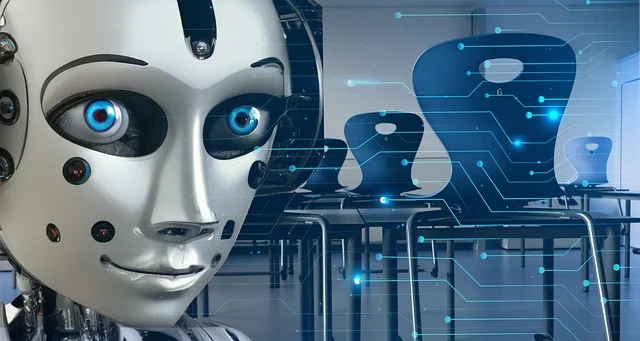Discover the extent of Pakistan’s brain drain crisis and its dangerous implications for a country grappling with underdevelopment and a lack of rule of law. Learn why over 400,000 highly-qualified individuals have left Pakistan in just six months, driven by economic uncertainty, rising inflation, and high unemployment. Explore the destinations chosen by Pakistani youth seeking better opportunities abroad and the regional distribution of this alarming phenomenon. Find out how Pakistan can address the brain drain crisis to foster development and stability.
Introduction
In recent years, Pakistan has grappled with a critical issue that threatens its development and stability: the brain drain phenomenon. According to official data released on Thursday, the migration of highly-qualified individuals from the country has reached alarming levels, with over 400,000 young Pakistanis leaving their homeland in just six months. This brain drain, driven by economic uncertainty, rising inflation, and high unemployment rates, indicates a significant challenge to the nation’s progress.
The Magnitude of Brain Drain in Pakistan
The statistics paint a gloomy picture of the brain drain crisis in Pakistan. Over the past five years, a staggering 2.75 million talented youth have bid farewell to their motherland in pursuit of better opportunities abroad. This heavy migration depletes the country’s intellectual capital; but leaves a vacuum in critical sectors such as healthcare, engineering, education, and management.
Under the current coalition government’s tenure, more than 1.2 million young individuals have sought employment overseas. In the first half of this year alone, a staggering 832,000 people left Pakistan, with over 400,000 being highly-educated and highly-trained youngsters. It includes accountants, engineers, doctors, technicians, managers, nurses, teachers, electricians, computer typists, agricultural experts, computer operators, supervisors, and draftspersons.
Factors Driving Brain Drain in Pakistan
To truly understand the brain drain phenomenon in Pakistan, it is crucial to examine the factors that compel talented individuals to seek opportunities elsewhere. Uncertain economic conditions, marked by a lack of investment, inadequate job creation, and persistent inflation, have created an environment of frustration and disillusionment. The resulting high levels of unemployment and limited career prospects push talented individuals to explore greener opportunities abroad.
Moreover, the absence of a vigorous rule of law and political instability further exacerbate the brain drain crisis. The lack of prospects for professional growth, inadequate support for research and development, and poor infrastructure impede the progress of highly-skilled individuals within the country. These systemic challenges create a vacuum that compels them to seek better options abroad.
Destination Choices: Where Pakistan’s Talented Youth Go
When young Pakistanis decide to leave their homeland, several destinations emerge as preferred choices for employment opportunities. Arab countries, including Saudi Arabia, the United Arab Emirates (UAE), Oman, and Qatar, attract significant Pakistani professionals. Approximately 700,000 individuals migrated to Saudi Arabia, 229,000 to the UAE, 111,000 to Oman, and 90,000 to Qatar. Beyond the Middle East, countries like Great Britain, the United States, Malaysia, Greece, and Romania also witnessed an inflow of Pakistani talent.
Regional Distribution of Brain Drain
The brain drain phenomenon in Pakistan is not evenly distributed across the country. A closer look at the regional breakdown reveals that Punjab, with 683,000 departures in the last year and a half, has been most affected by brain drain. Khyber-Pakhtunkhwa follows with 324,000 migrants, while Sindh, Balochistan, Azad Jammu and Kashmir, and Islamabad account for 90,000, 12,000, 44,000, and 11,000 departures respectively.
The Implications of Brain Drain
Pakistan’s brain drain crisis poses significant challenges for its development course. When highly-educated and highly-trained individuals migrate, the country loses the potential to nurture and utilize its skills and expertise for its progress. The healthcare sector suffers from a shortage of doctors, nurses, and technicians, while the engineering industry grapples with a scarcity of skilled professionals. This brain drain also hampers the education sector, depriving it of capable teachers and educators who could shape the future generations of Pakistan.
Addressing the Brain Drain Crisis
Pakistan must take immediate and targeted measures to reduce the adverse effects of brain drain. A comprehensive approach that tackles the root causes of brain drain is essential. The government should prioritize economic stability, job creation, and investment to foster an environment facilitative to growth and innovation. Strengthening the rule of law, enhancing governance mechanisms, and promoting political stability will ingrain confidence in talented individuals, encouraging them to stay and contribute to the nation’s progress.
Furthermore, the liable should take steps to improve the quality of education and professional development opportunities within the country, By investing in research and development, promoting innovation, and creating a supportive ecosystem for entrepreneurship, Pakistan can retain its talented youth and provide them with avenues for growth and advancement.
Conclusion
The brain drain phenomenon in Pakistan is a pressing concern that demands urgent attention. The migration of highly-qualified individuals poses a significant threat to the country’s development and stability. By understanding the underlying causes, addressing economic challenges, and investing in education and infrastructure, Pakistan can control the brain drain and create an environment where talented individuals can thrive and contribute to the nation’s progress.









One Comment